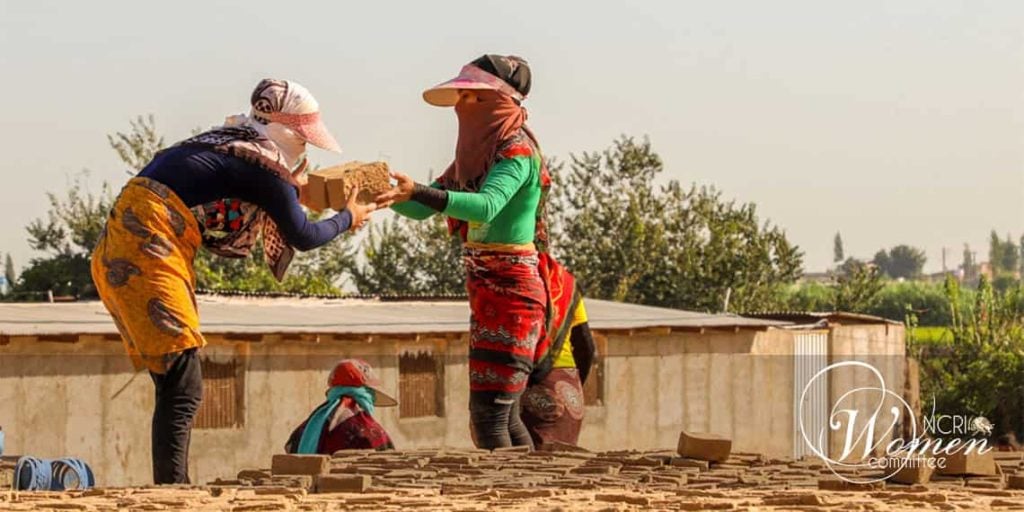Khamenei’s Economic Agenda Impacts Iranian Workers, with Women Bearing the Brunt
International Workers’ Day presents a poignant moment to reflect on the plight of female workers in Iran, and Iranian workers in general, who navigate a landscape of economic hardship and exploitation under the mullahs’ repressive rule.
While comprehensive data and statistics about female workers in Iran are scarce, anecdotal evidence sheds light on their challenging circumstances. Typically, the small fraction of women who secure employment in Iran’s male-dominated job market often finds themselves relegated to the service sector or informal workshops. These roles frequently come with temporary contracts, leaving women vulnerable to exploitation. Moreover, they often work in substandard conditions without insurance or benefits, resembling conditions akin to modern-day slavery.
Focusing on the broader conditions of workers in Iran provides a foundational understanding from which one can infer the challenges faced by female workers. By examining the general landscape of employment, wages, job security, and working conditions, we can extrapolate the struggles and vulnerabilities experienced by women in the workforce.
Struggling to Survive on Meager Wages
Iranian workers endure severe hardships, with many struggling to survive on meager wages. The minimum monthly wage, which stood at $235 in 2010, has plummeted to around $110, equivalent to just 46 cents per hour, plunging workers into poverty. Shockingly, a significant portion of workers doesn’t even receive this paltry wage, exacerbating their financial distress. Delays in salary payments are common, stretching from months to a year, leaving workers in dire straits and unable to meet basic needs.
This grim reality hits female workers especially hard. Not only do they contend with lower wages compared to their male counterparts, but they also face longer working hours, often in precarious conditions. The economic downturn has disproportionately affected women, pushing many into poverty, particularly those who head households, numbering over 6 million.
Some women resort to weight carrying in the western border regions which is a horrendous job even for men.
More than 1,000 Workers Died in Workplace Accidents in Six Months
Compounding these economic woes is the government’s neglect of safety regulations, resulting in frequent workplace accidents and fatalities. Shockingly, these safety lapses are often deliberate, as the regime seeks to cut down on expenses, prioritizing profits over workers’ lives. According to the report of the Forensic Medicine Organization, from March 2023 to September 2023, over a thousand workers lost their lives in work-related incidents.
Popularizing the Economy Means Massive Layoffs for Workers
Moreover, Khamenei’s plan to militarize the economy exacerbates the plight of workers. This strategy leads to mass layoffs and the transition of many workers to temporary status, further eroding job security and driving down wages. The regime’s deceptive rhetoric about “popularizing the economy” masks its true intentions of prioritizing military spending over the welfare of workers.
Khamenei, under the pretext of “popularizing the economy,” is covertly transferring significant portions of public assets and state-owned enterprises to the Revolutionary Guards (IRGC) and affiliated foundations. This maneuver will trigger another wave of factory closures and job losses, disguised as “workforce adjustments.” Moreover, it will force remaining workers into temporary employment, tightening control over labor and driving wages down further.
The oppressive measures outlined in the 7th Development Program further compound the challenges faced by workers. These include provisions that ban official employment of workers, allow employers to pay new hires below minimum wage, and offer only temporary contracts, denying workers essential benefits and protections.
Despite these adversities, Iranian workers persist in their struggle for better conditions. Week after week, they take to the streets in protest, demonstrating remarkable courage and resilience in the face of repression. Their unwavering determination reflects a deep-seated desire for change and a rejection of the status quo that perpetuates their suffering.
